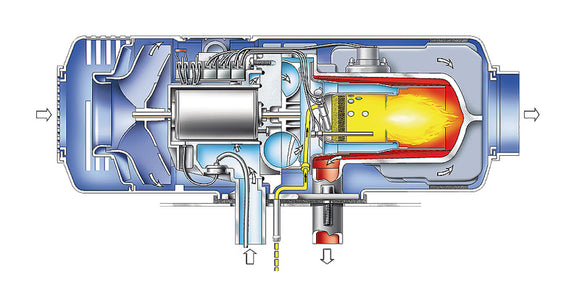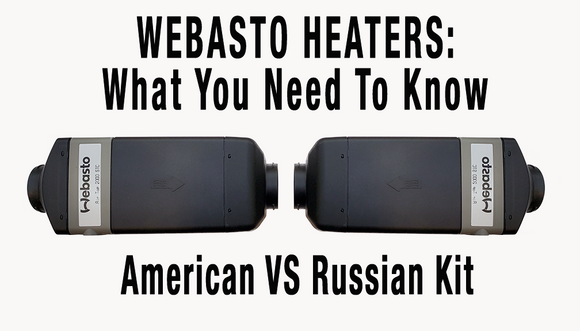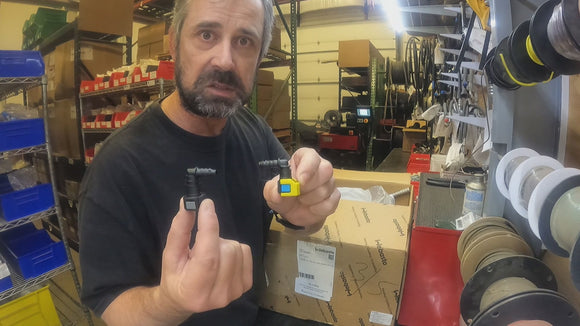How Does A Webasto Heater Work?
Considering buying a Webasto heating solution for your camper van or off road construction vehicle?
We stock most models of Webasto diesel heaters including the Air Top 2000 STC and EVO 40. We have both models in Gasoline and Diesel variants. Be sure to also pair your heaters with the Smart Temp Control 3.0BT for easy adjustments and programmable heating times with Bluetooth connectivity to your mobile device.
Webasto heaters pass air over a heat exchanger which allows the heated air to be dispersed throughout the interior of the vehicle and kept completely separate from combustion air.

Here is a 5 Step Webasto Heater Instruction Guide for How a Webasto Heater works:
By turning the switch on the fuel pump begins to pump fuel from the fuel tank to the heater. Simultaneously, the unit begins to take air from the outside for combustion purposes. At this point the fuel is ignited via a glow plug. The combusted exhaust air is ejected back outside.
A flame is lit in the combustion chamber which heats the heat exchanger. The fuel pump supplies more or less fuel based on the temperature setting you select. The electronic controls within the heater, ramp the fans faster or slower to maintain proper air/fuel ratios for a clean burn or the fuel.
During the heating stage, an integrated fan pulls air through the air inlet of the heater case. The air flows around the outside of the heat exchanger, heats up and is then discharged though the air outlet. Cabin air and combustion air are never intermixed which maintains the integrity of cabin air quality.
Regulate the temperature by using a Webasto Smart Temp Control 3.0BT digital controller. This is the best way to program heat start times. This sensor also measures the interior temperature and adapts the heating level by adjusting the amount of air passing through the Unit.
When the heater has been switched off, the combustion process halts in a controlled manner and begins to cool down.
_______________________________________________________
Benefits of a Built In Webasto Heater?
Air heaters are installed inside the vehicle on the floor or other mounting device. For install, be sure to match the heater fuel type and operating voltage to your vehicle fuel type and operating voltage. You will need floor space roughly equal to the size of a shoe box with unobstructed area below the floor for exterior connections to the heater. The heater can be installed in a standalone configuration or within cabinetry provided the cabin air is properly ducted into and out of the heater and never obstructed.
Are you still using a portable heater ? It might be time to upgrade and install a built in heater because they have more functions and capabilities than a portable heater, they have the ability to tap into a fuel source, can run longer, and most importantly the combustion process is separate from the interior air which means moisture can't build up inside the cabin.
A built in heater also takes up less space which is key for logistical movers and travelers. Having a portable heater takes up more space and the surfaces around the heater become hot which means a high risk of fire.
Webasto Heating Solution Benefits:
- Webasto uses fuel directly from your vehicle. This helps because you do not have to carry a separate fuel tank and take up valuable cargo space.
- Gas and Diesel are more energy dense compared to propane and therefore take less fuel to heat your van.
- Low cost of operation over time
- Saves engine wear and tear and maintenance cost related to extended idling
- Highly fuel efficient, runs up to 22 Hours on a single gallon of fuel compared to an idling engine consuming approximately .8 gallons per hour.
- Produces significantly less carbon emissions than an idling engine
Webasto Heater Disadvantages
- Gasoline and Diesel are dirtier fuels compared to propane. This means carbon can build up over time.
- Cleaning out carbon is not easy. The whole unit has to be taken out, disassembled and cleaned.
- Operation for extended periods at high altitudes may require Dealer adjustment of the combustion air/fuel ratio. For a detailed explanation of the process check out our video on YouTube https://youtu.be/eiHa9HTDH3Y
- High upfront cost

When it comes down to choosing propane over gas/diesel heaters, this is what you should think about:
- It takes a lot of effort and valuable space to carry or install a propane tank (energy source) just for a heater.
- If you are running the heater for an extended amount of time it will become costly due to propane being a lower energy density.
- Portable propane heaters can cause a significant fire hazard due to open heating elements
- Portable propane heaters eject exhaust into the cabin air you are breathing
- Propane heaters tend to cause condensation in the vehicle interior
We recommend consulting with us to either rebuild your heating system or be a resource if you are installing a Webasto Heater.




